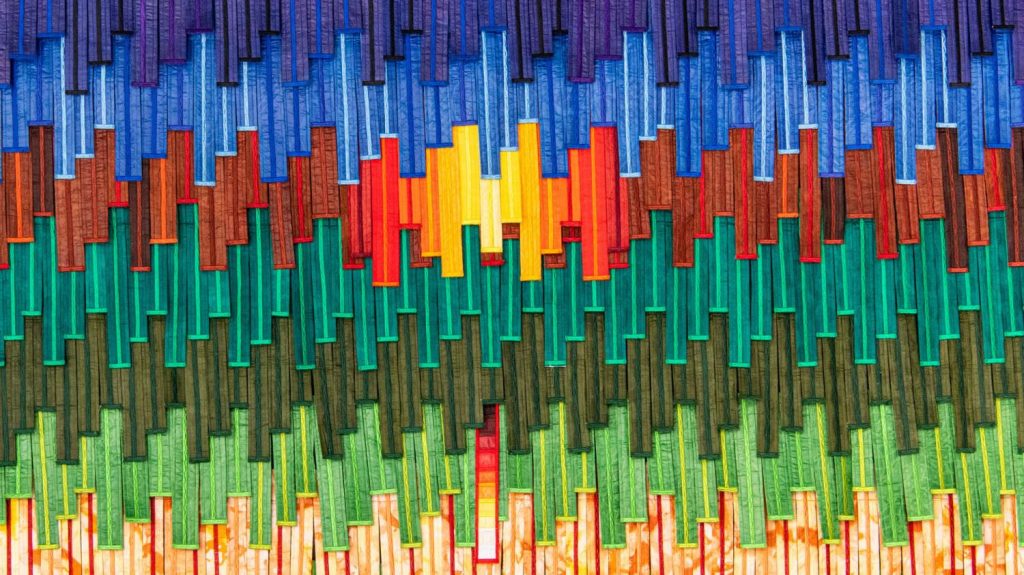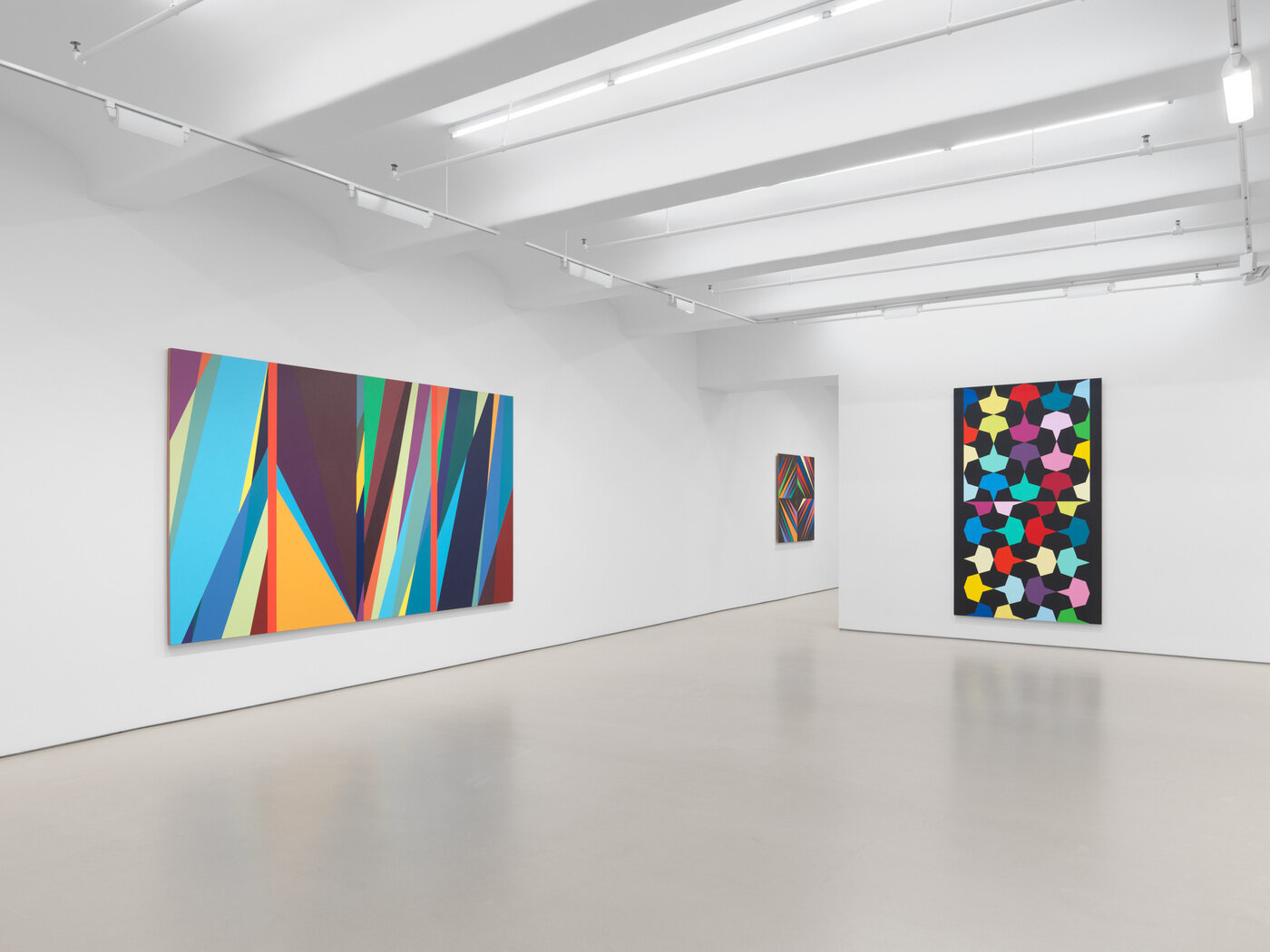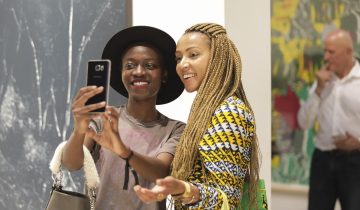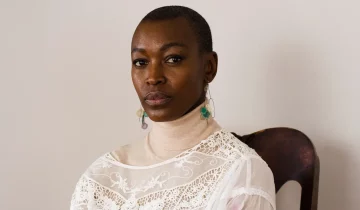African art has a rich and diverse history, spanning centuries and reflecting a wide array of cultural, social, and religious influences. Traditional African art, known for its masks, sculptures, and textiles, has captured the attention of the world for generations. With the emergence of contemporary African art, a new wave of creativity has swept across the continent, showcasing the talent and ingenuity of African artists. Among these contemporary styles, African abstract art holds a special place, as it combines elements of traditional African art with modern techniques and themes. In this journal, we will explore the beauty and significance of contemporary African abstract art, from its origins to its global impact.
The Origins of Contemporary African Abstract Art
Contemporary African abstract art owes its existence to a blend of influences from traditional African art and exposure to Western abstract art. Artists across the continent have found inspiration in the rich cultural heritage and aesthetics of their ancestors, as well as the groundbreaking works of Western abstract painters. The fusion of these artistic elements has led to a unique form of abstract art that is both deeply rooted in African culture and open to new forms of expression and creativity.
Major Themes in Contemporary African Abstract Art
Contemporary African abstract art addresses a variety of themes, reflecting the diverse experiences and perspectives of African artists. Some of the major themes include:
- Sociopolitical Issues: Many contemporary African abstract artists use their work to comment on postcolonialism, identity, and representation. Their art often challenges stereotypes and raises awareness about the complex histories and realities of African nations.
- Cultural Heritage: Artists incorporate symbolism and motifs from traditional African art, using them as a foundation for their abstract creations. Additionally, they often employ traditional materials and techniques, thereby honoring and preserving their cultural heritage.
- Spirituality and Nature: Contemporary African abstract art frequently explores the connections between spirituality, nature, and the human experience. Artists may draw on indigenous beliefs and practices, as well as the natural world, to create works that evoke a sense of awe and reverence.

Prominent Artists and Their Contributions
Several artists have made significant contributions to contemporary African abstract art. Some of the most notable figures include:
- El Anatsui: A Ghanaian sculptor and professor, El Anatsui is renowned for his large-scale installations made from recycled materials, such as bottle caps and aluminum. His innovative works, which often resemble traditional textiles, have been exhibited in major museums worldwide. Anatsui’s art demonstrates the power of transformation, turning discarded materials into stunning works of beauty.
- Wangechi Mutu: A Kenyan-born artist based in the United States, Wangechi Mutu explores themes of identity, gender, and race through her collages and sculptures. Her abstract works often incorporate organic forms and materials, blurring the lines between human and nature. Mutu’s art has been widely acclaimed for its thought-provoking and visually striking qualities.
- Abdoulaye Konaté: Hailing from Mali, Abdoulaye Konaté creates large-scale textile installations that address social, political, and environmental issues. Drawing on traditional Malian weaving techniques, Konaté’s works are characterized by vibrant colors and intricate patterns. His art serves as a testament to the importance of cultural heritage in contemporary African abstract art.
- Other Noteworthy Artists: Numerous other artists have made significant contributions to contemporary African abstract art, including Julie Mehretu, Odili Donald Odita, and William Kentridge, among others. Each artist brings their unique perspective and style to the genre, expanding the boundaries of what African abstract art can be.

The Global Impact of Contemporary African Abstract Art
Contemporary African abstract art has made a significant impact on the global art scene, garnering international recognition and influencing artists worldwide. Several factors have contributed to this growing prominence:
- International Exhibitions and Recognition: Contemporary African abstract artists have been featured in major exhibitions and galleries, such as the Venice Biennale, the Dakar Biennale, and the Museum of Modern Art in New York. These showcases have introduced a global audience to the beauty and complexity of African abstract art, helping to elevate its status within the art world.
- Influence on the Global Art Market: As contemporary African abstract art gains recognition, it has also attracted the attention of collectors and investors. This growing demand has led to increased visibility and value for African artists, further solidifying their place in the global art market.
- Cross-Cultural Exchange and Collaboration: Contemporary African abstract art has inspired and been influenced by artists from various cultural backgrounds. This cross-cultural exchange has enriched the genre, allowing for the creation of innovative and boundary-pushing works that reflect a diverse range of perspectives and experiences.
In concluding, the beauty and importance of contemporary African abstract art cannot be overstated. From its origins in the fusion of traditional African art and Western influences, to its exploration of sociopolitical issues, cultural heritage, and spirituality, African abstract art offers a unique and powerful form of creative expression. The works of prominent artists such as El Anatsui, Wangechi Mutu, and Abdoulaye Konaté, among many others, have left an indelible mark on the global art community and continue to inspire future generations.
As contemporary African abstract art continues to gain international recognition and influence, it plays a vital role in shaping cultural identity and expression on the continent and beyond. With its potential for further growth and impact, African abstract art promises to remain a vibrant and essential part of the global art landscape for years to come.
FAQ
What is African abstract art?
African abstract art is a contemporary form of artistic expression that originates from Africa and incorporates elements of traditional African art, as well as influences from Western abstract art. It often explores themes such as sociopolitical issues, cultural heritage, and spirituality, while utilizing various materials and techniques. African abstract art is characterized by its unique visual language, which is deeply rooted in African culture while also embracing modernity and innovation.
What are the 7 types of abstract art?
While there are many different types and styles of abstract art, they can generally be categorized into seven main types:
- Cubism: Characterized by the fragmentation and distortion of forms, this style was pioneered by artists such as Pablo Picasso and Georges Braque.
- Abstract Expressionism: A post-World War II art movement that emphasizes the spontaneous application of paint, often on large canvases. Notable artists include Jackson Pollock, Mark Rothko, and Willem de Kooning.
- Minimalism: This style focuses on simplicity and the reduction of art to its most basic elements, often using geometric shapes and monochromatic color schemes. Key figures in minimalism include Donald Judd, Agnes Martin, and Frank Stella.
- Geometric Abstraction: A form of abstract art that relies on geometric shapes, lines, and patterns. Artists like Kazimir Malevich, Piet Mondrian, and Wassily Kandinsky are associated with this style.
- Lyrical Abstraction: This approach emphasizes the expressive qualities of color, line, and form, often with a sense of movement and fluidity. Artists such as Helen Frankenthaler, Sam Francis, and Joan Mitchell have been associated with lyrical abstraction.
- Color Field Painting: A sub-genre of Abstract Expressionism, color field painting is characterized by large areas of solid color, with an emphasis on the visual impact of color relationships. Mark Rothko, Barnett Newman, and Clyfford Still are notable color field painters.
- Biomorphism: Inspired by organic forms and shapes found in nature, biomorphism often features fluid, curving lines and an emphasis on the natural world. Artists like Jean Arp and Joan Miró have explored this style.
Why do we mostly see abstraction in African art?
Abstraction in African art can be attributed to a number of factors, including cultural, spiritual, and aesthetic reasons. Traditional African art often used abstract forms to represent spiritual concepts, emotions, and the human experience. Additionally, abstraction allowed artists to convey complex ideas and symbolism without relying on realistic representation. The prevalence of abstraction in contemporary African art can be seen as a continuation of these artistic traditions while also incorporating modern influences and techniques.
What styles of art are in Africa?
Africa is home to a diverse range of artistic styles, reflecting the rich cultural history and unique experiences of its many peoples. Some of the main styles of African art include:
- Traditional African art: This encompasses a wide range of artistic forms, such as masks, sculptures, textiles, and pottery, often featuring intricate patterns and symbolic motifs.
- Contemporary African art: This category includes a variety of modern styles and techniques, such as painting, photography, and mixed media, that address current issues and concerns while also drawing on traditional African artistic influences.
- African abstract art: As discussed in this essay, African abstract art is a contemporary form of artistic expression that combines elements of traditional African art with influences from Western abstract art.
- African modernism: This style emerged in the mid-20th century as African artists began to explore new approaches to art-making, often incorporating European modernist techniques and ideas into their work.
- African street art: This form of public art has gained popularity across the continent, with artists using urban spaces as their canvas to create murals, graffiti, and other forms of visual expression that often address social and political issues or celebrate local culture.
- Afrofuturism: This artistic movement combines elements of science fiction, fantasy, and African history and culture to imagine alternative futures and explore themes of identity, technology, and the African diaspora. Afrofuturism can be found in various artistic disciplines, including visual art, literature, music, and fashion.
- Pan-African art: This style of art seeks to promote unity among African nations and the African diaspora by celebrating shared cultural heritage and highlighting common experiences. Pan-African art often addresses themes of solidarity, resistance, and empowerment.These are just a few examples of the many styles and movements that can be found within African art, demonstrating the vast diversity and rich cultural heritage of the continent.




 No products in the basket.
No products in the basket.